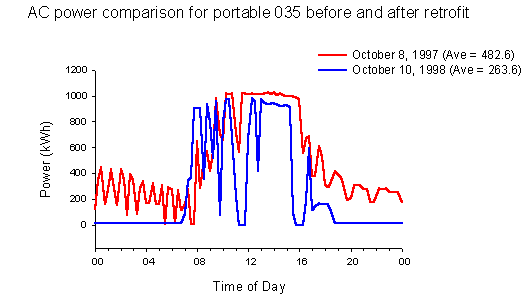
![]()
Heat, Ventilation and Air Conditioning (HVAC)
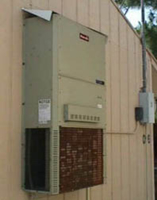 |
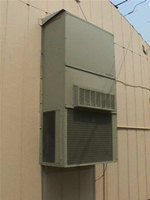 |
|
Old HVAC System |
New HVAC System |
|---|
In Florida, cooling and ventilation typically makes up one-third of a schools' energy budget. A poorly sized HVAC - or a poorly maintained system, can lead to major problems with indoor air quality, bacterial contaminants, viruses, mold, spores, and pollen (Brown 1995).
HVAC's are sometimes oversized by contractors in order to avoid future complaints (Vieira et al. 1996). The HVAC currently in place in the portable is a Crispaire AVP36HPA 3 ton wall mount unit. It has been replaced by a more efficient Bard WH301-A 2 ½ ton wall mount unit. Bard manufacturing has donated the model for our research project.
The new Bard 2 1/2 ton unit is more efficient than the old 3 ton unit. The Bard unit has an enthalpy recovery wheel which adds a large volume of outside air which is first cooled and dried prior to being introduced into the classroom. The ventilation rate for portable 096 is 0.68 ACH (air changes per hour) and for portable 035 is 3.382 ACH. As a result of the new AC, there was not significant energy savings versus portable 096 which is explained by the added ventilation. The ventilation for the new AC is much greater than that of portable 096.
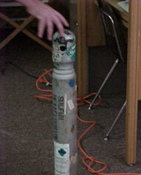 |
| Bottle of SF6 tracer gas used to determine the ventilation rate in the portable classrooms. |
|---|
To test the ventilation we measured the dilution in a tracer gas (sodium hexafluoride SF6) present over time using a Bruel and Kjaer model 1302. With an average student occupancy of 20, this test indicated that portable 035 meets the ASHRAE 62-1989 guidelines of 15 cfm per person. On the other hand, portable 096 without the ventilation system only saw a rate of 4.5 cfm/student.
The figure below demonstrates the HVAC power comparison for matched days on October 8, 1997 and October 10, 1998. The figure demonstrates that the kWhs used by the new AC system is 54% less after the retrofit than prior to it. Part of this can be attributed to the occupancy sensor that turns the AC off when the portable is unoccupied, whereas before the AC was constantly on, even if the portable was empty. From the graph it can also be seen that the demand for the new AC is less than that of the old AC during the hottest part of the day.
Although we have increased the ventilation of portable 035 by five times that of 096 (and are providing better indoor air quality as evidenced by the lower CO2 levels), we have still been able to cut the air conditioner size and AC power with the improvements made to the cooling system. This is primarily due to reducing cooling loads from the roof and lighting as well as the more efficient air conditioning system with its enthalpy recovery wheel.
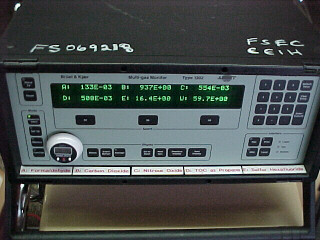 |
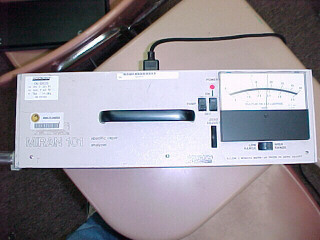 |
|
| Tracer gas sampling instrumentation. |
||

